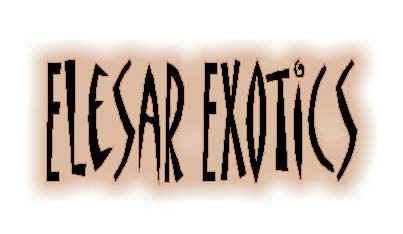


Glossary of African terms
Wood Carvings
Makonde:
Makonde are Bantu speaking people originally from Mozambique, with some moving northward to Tanzania. They are primarily farmers growing maize, sorghum, and cassava. The Makonde people still follow their tripartite view of the world, consisting of the sky -where the gods live-, the world of spirits and the human world. Woodcarving is an important part of Makonde life, both in ancestor worshipping and in their own myth of creation. When the Makonde moved to Tanzania, selling woodcarving became an important means of income. The three most common styles of carving are Binadamu, Shetani and Ujamaa.Binadamu:
Binadamu is Swahili for Human Being. The binadamu carving style therefore is used to represent Makonde men and women pursuing traditional roles in their daily life: old men smoking pipes, men playing instruments, women with calabashes fetching water, and so on. The style is naturalistic.Shetani:
Shetani is Swahili for spirit or devil. It is the most recent style of carving and depicts the spirits of Makonde folklore in abstract and sometimes grotesque forms. The Makonde believe there are hundreds of these spirits and have names for many. Their ancestors have described these creatures, many having encountered them in the forests. It is with this style that the imagination can run wild.Ujamaa:
Ujamaa is a Swahili word meaning unity and was the for socialism in Tanzania. Ujamaa is a style of carving, also known as "tree of life", which depicts intricate interlocking human figures representing unity and continuity.Mpingo:
Mpingo is the Swahili name for the African Blackwood tree and the wood of choice used by the Makonde and other groups for their wood carvings. This wood is usually referred to as ebony because of its beautiful dark colored heartwood. It also is the premier wood of choice for fine concert-quality woodwind instruments such as clarinets, oboes and flutes, as well as bagpipes due to its density, fine texture and exceptional durability.
Maasai:
Perhaps the best known of the African peoples are the Maasai, pastoral nomads, who live in southern Kenya and northern Tanzania. They can still be seen in traditional dress, red blankets and colorful beadwork, tending their cattle on the East African plains.Ndebele:
The Ndebele people live in South Africa in the Transvaal and are known for their colorful houses painted in geometric patterns as well as their intricate colorful beadwork and traditional dress.
Stone Carvings
Shona:
The Shona people are from Zimbabwe and are best known for their skills in sculpting the different varieties of stone found in Zimbabwe.Shona sculpture is steeped in the legend and traditions of an ancient African culture, yet stunningly modern in appearance. Shona sculptors, transcending geography and time, create in the living stone profound expressions of the human condition. Sculpting by hand with simple and found tools, these self-taught artists carve in indigenous serpentine, granite, and rare precious verdite. The result is a diverse body of work alive with dynamic, spiritual themes. Select pieces can be found in the permanent collections of many museums, including the Museum of Modern Art in New York, the Rodin Museum in Paris, and the London Museum of Contemporary Art.
Newsweek called Shona sculpture "the most important new art form to emerge from Africa in the last hundred years," while the Economist proclaimed Shona sculptors to be the "world's best unknown artists."
Shona Sculpting 101
- The first and most important step sculptors take is choosing their stone. The most popular stones used are brown, green and black serpentine, springstone, opal, verdite, leopard rock, rapoko and red jasper.
- Only after seeing the shape, color and size of the stone will the artist decide on the subject he will sculpt.
- The artist shapes the stone using a hammer, chisel, knife and rasp.
- The stones are finished by hand with wet sand paper.
- The stones are heated mainly with a gas flame so the polish will be easily absorbed, resulting in a long lasting finish when polished.
- A white wax furniture polish or beeswax is applied immediately while the piece is still hot. Once cooled, it is shined with a soft cloth.
Tonga
The Tonga people live in remote northwestern Zimbabwe. They were forcibly removed from the Zambezi Valley to make way for the filling of Kariba Dam in 1957. Now they survive on harsh, dry land 12km from the Zambezi River, with little more than their vibrant and exotic culture, which, because of their isolation, remains vivid and strong.
Verdite
Verdite is a semi-precious stone, formed over 3,500 million years ago, and found only in southern Africa. The highest quality verdite contains corundum (the second hardest natural mineral known to science) and is only found in Zimbabwe. Only the more experienced sculptor will ever use this medium. Verdite rates between a 7.0-9.0, depending upon the amount of corundum inclusions, on the Hohs hardness scale. Due to the rareness of verdite, carvings from this stone will become increasingly more valuable.